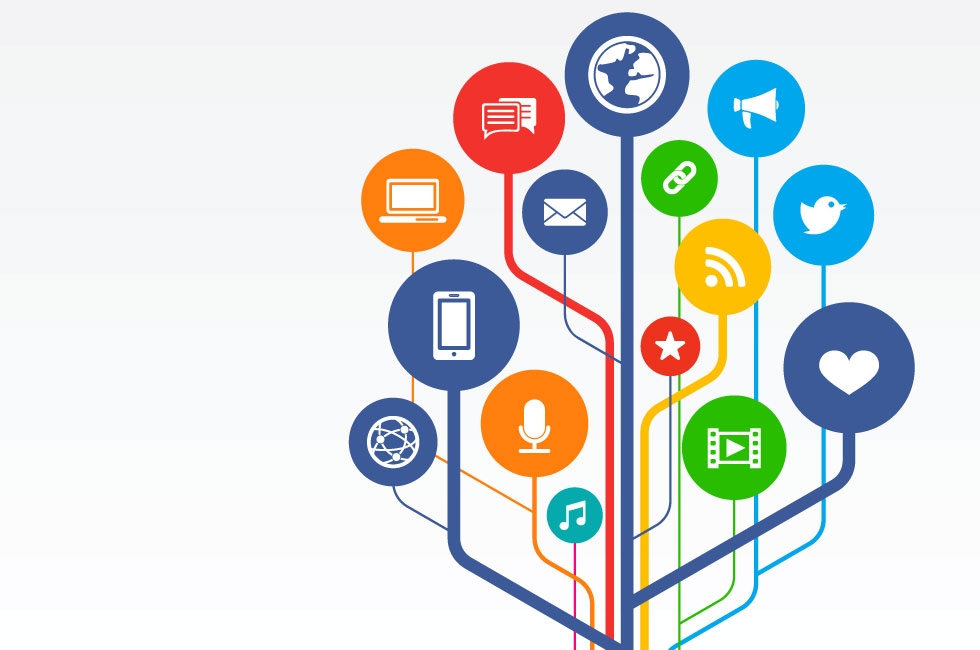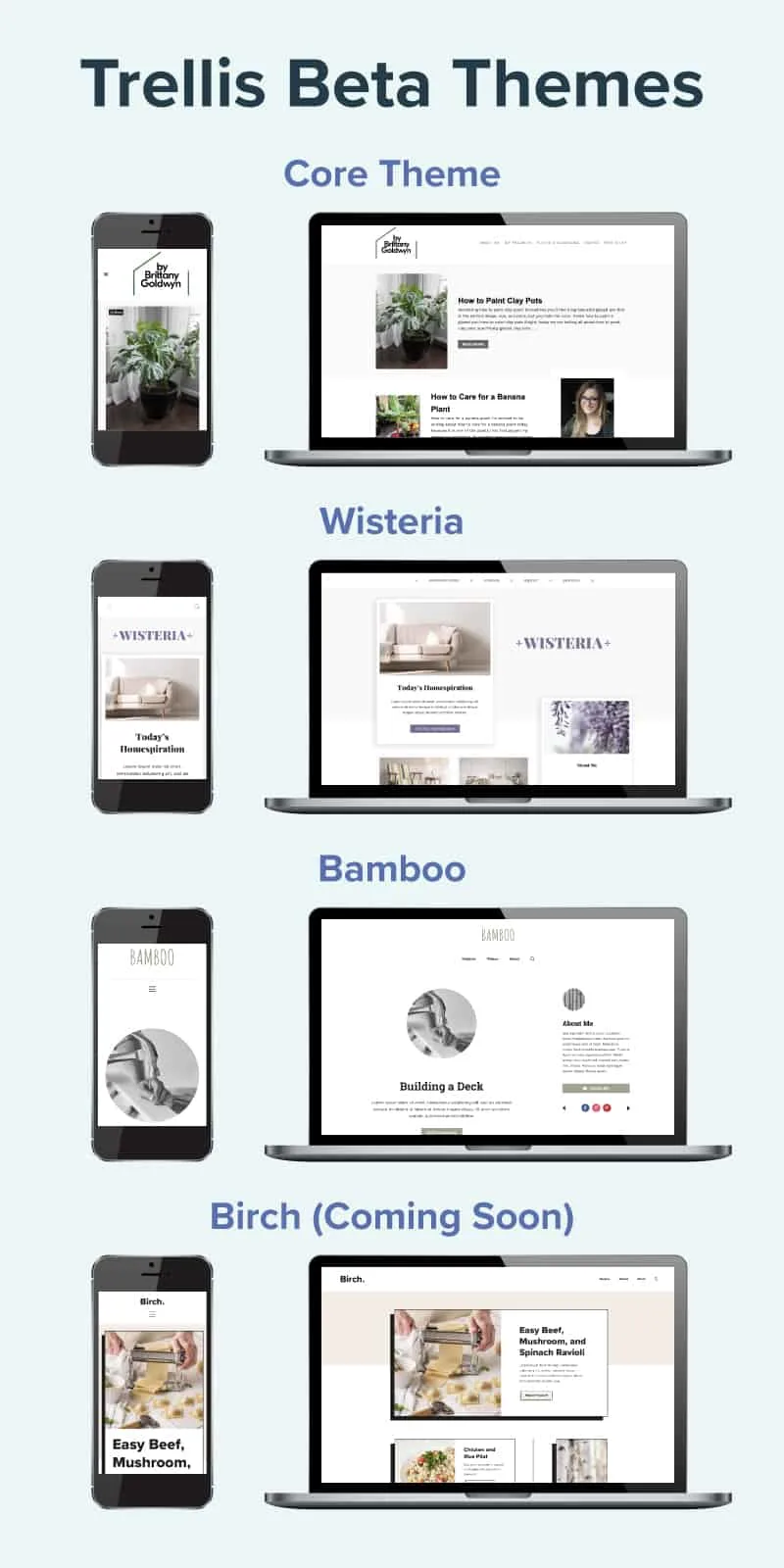- Ted Talkingslcsd Educational Technology Resources Technology
- Ted Talkingslcsd Educational Technology Resources Internships
- Ted Talkingslcsd Educational Technology Resources Examples
- Ted Talkingslcsd Educational Technology Resources Inc
- TED Talks on Education. In these TED talks, students and educators share their stories of how technology has helped them learn to code, make art, connect with others, start schools, and more. Let’s Teach Kids To Code MIT professor Mitch Resnick believes in the power of teaching kids as young as kindergartners how to build programs.
- Educational Technology Research and Development, 49(1), 53-64. Reiser, R, A (2001) A history of instructional design and technology: Part II: A history of instructional design. Educational Technology Research and Development, 49(2), 57-67.
Frontline Education reached out to us with the idea of combining amazing stories of schools transforming their processes with technology by setting up innovating projects. This post will show you 8 educational projects that make excellent use of technology to make both small and big changes. We hope that these ideas inspire you.

Ted Talkingslcsd Educational Technology Resources Technology
Technology has impacted almost every aspect of life today, and education is no exception. Or is it? In some ways, education seems much the same as it has been for many years. A 14th century illustration by Laurentius de Voltolina depicts a university lecture in medieval Italy. The scene is easily recognizable because of its parallels to the modern day. The teacher lectures from a podium at the front of the room while the students sit in rows and listen. Some of the students have books open in front of them and appear to be following along. A few look bored. Some are talking to their neighbors. One appears to be sleeping. Classrooms today do not look much different, though you might find modern students looking at their laptops, tablets, or smart phones instead of books (though probably open to Facebook). A cynic would say that technology has done nothing to change education.
However, in many ways, technology has profoundly changed education. For one, technology has greatly expanded access to education. In medieval times, books were rare and only an elite few had access to educational opportunities. Individuals had to travel to centers of learning to get an education. Today, massive amounts of information (books, audio, images, videos) are available at one’s fingertips through the Internet, and opportunities for formal learning are available online worldwide through the Khan Academy, MOOCs, podcasts, traditional online degree programs, and more. Access to learning opportunities today is unprecedented in scope thanks to technology.
Opportunities for communication and collaboration have also been expanded by technology. Traditionally, classrooms have been relatively isolated, and collaboration has been limited to other students in the same classroom or building. Today, technology enables forms of communication and collaboration undreamt of in the past. Students in a classroom in the rural U.S., for example, can learn about the Arctic by following the expedition of a team of scientists in the region, read scientists’ blog posting, view photos, e-mail questions to the scientists, and even talk live with the scientists via a videoconference. Students can share what they are learning with students in other classrooms in other states who are tracking the same expedition. Students can collaborate on group projects using technology-based tools such as wikis and Google docs. The walls of the classrooms are no longer a barrier as technology enables new ways of learning, communicating, and working collaboratively.

Technology has also begun to change the roles of teachers and learners. In the traditional classroom, such as what we see depicted in de Voltolina’s illustration, the teacher is the primary source of information, and the learners passively receive it. This model of the teacher as the “sage on the stage” has been in education for a long time, and it is still very much in evidence today. However, because of the access to information and educational opportunity that technology has enabled, in many classrooms today we see the teacher’s role shifting to the “guide on the side” as students take more responsibility for their own learning using technology to gather relevant information. Schools and universities across the country are beginning to redesign learning spaces to enable this new model of education, foster more interaction and small group work, and use technology as an enabler.
Technology is a powerful tool that can support and transform education in many ways, from making it easier for teachers to create instructional materials to enabling new ways for people to learn and work together. With the worldwide reach of the Internet and the ubiquity of smart devices that can connect to it, a new age of anytime anywhere education is dawning. It will be up to instructional designers and educational technologies to make the most of the opportunities provided by technology to change education so that effective and efficient education is available to everyone everywhere.
Jul 11, 2015 10 Branding Elements and What They Mean. Let us begin with the very basic. What exactly is a brand and what is brand identity?The brand of course is an easily recognizable name that immediately tells people about a certain organization that manufactures certain products or renders certain services. See full list on blog.kathoderay.com. CONCLUSION: Branding is a very complex and comprehensive process which should not rush through in a day. Ensure to take out time over all these elements of branding, with a cohesive and consistent. Elements of branding and their definition.
You can help shape the influence of technology in education with an Online Master of Science in Education in Learning Design and Technology from Purdue University Online. This accredited program offers studies in exciting new technologies that are shaping education and offers students the opportunity to take part in the future of innovation.
Ted Talkingslcsd Educational Technology Resources Internships
Make a hacking lab on mac. Learn more about the online MSEd in Learning Design and Technology at Purdue University today and help redefine the way in which individuals learn. Call (877) 497-5851 to speak with an admissions advisor or click here to request more information.
- Interactive Open Educational Resources: The Handbook was written by Penn State's own John Shank. There are lots of resources available to use. The complete e-Book is available through the Penn State Library.
- Instructional Design Central's Instructional Design Models and Methods page provides overviews of several popular Instructional Design models.
- Tools and Tips for Teaching and Learning from the Schreyer Institute for Teaching and Learning at Penn State.
- Learning Principles from 'Head First.' A great, brief, summary of principles one should follow when creating learning materials!
- Resources in Science and Engineering Education. A collection of articles and research studies that cover a broad array of teaching strategies and tips related to science and engineering education from a faculty member at North Carolina State University.
- 7 Things You Should Know About.. 'The EDUCAUSE Learning Initiative's (ELI's ) 7 Things You Should Know About.. series provides concise information on emerging learning technologies and related practices.'
- Action Verbs for Learning Objectives. David DiBiase created this useful summary that pairs Bloom's Taxonomy with suggested action verbs to be used as an aid for writing learning objectives. Adapted from Anderson et al: 'A Taxonomy for Learning, Teaching, and Assessing: A Revision of Bloom's Taxonomy of Educational Objectives' (2001).
- Learning Theories from the Theory Into Practice (TIP) database.
Blogs
- Bozarthzone blog contains ideas and information on e-learning, training and development.
- Cammy Bean's Learning Visions blog contains ideas and musings on Instructional Design and e-Learning.
- PsyBlog explores scientific research on how the mind works. The studies covered have been published in reputable academic journals in many different areas of psychology.
- Learning Solutions Magazine is an online magazine about learning technology, strategy, and news.
Free Books
- List of free e-learning resources provided by eLearning Industry.
- Game Changers: Education and Information Technologies - An EDUCAUSE e-Book New models and new technologies allow us to rethink many of the premises of education—location and time, credits and credentials, knowledge creation and sharing. Institutions are finding new ways of achieving higher education’s mission without being crippled by constraints or overpowered by greater expectations. Game Changers, a collection of chapters and case studies contributed by college and university presidents, provosts, faculty, and other stakeholders, explores these new models.
- Theory and Practice of Online Learning - Athabasca University Awarded the Charles A. Wedemeyer Award by the University Continuing Education Association. The Charles A. Wedemeyer Award recognizes publications of merit that make significant contributions to research in the field of distance education.
- Emerging Technologies in Distance Education by George Veletsianos A one-stop knowledge resource, Emerging Technologies in Distance Education showcases the international work of research scholars and innovative distance education practitioners who use emerging interactive technologies for teaching and learning at a distance.
- Learning Perspectives - The MASIE Center (2011)
- Web 2.0 Tools in Education: A Quick Guide by Mohamed Amin Embi. This book includes 20 2.0 Tools that you can use in Education.
- The Strategic Management of e-Learning Support by Franziska Zellweger Moser. This book includes the research of three innovative American Universities with more than 50 interviews with key persons reflecting a wide variety of perspectives. In this research project the strategic management of e-Learning support at American research universities was studied.
- Michael Allen's 2012 e-LEARNING Annual by Michael Allen ('Don't Get Trapped by Your e-Learning Tools' by Allan Henderson). This Annual offers a revealing discussion and debate, consisting of 27 papers from 30 authors, on the appropriate selection and implementation of technology for learning solutions. “By placing so many viewpoints together, Allen has made it possible to do the classic ‘compare and contrast’ that helps develop insights and identify possibilities and strategies that fit our particular circumstances,” explains Bill Brandon, editor of Learning Solutions Magazine for The eLearning Guild, in his book review. “The authors support all of the content with decision aids, tables, and figures that you will find useful not only for your own understanding, but also for explaining new concepts and ideas to others, including decision-makers”.
- Successful e-LEARNING Interface: Making Learning Technology Polite, Effective & Fun by Michael Allen. (Only Chapter 2: Introducing the CEO of LID). This book will help you use your time and resources effectively to build the best e-learning experiences possible within your constraints. As with the other books in this series, this book is geared toward pragmatic application. It's direct and to the point: here's how to connect with your learners, how to empower learning to make the most of e-learning's capability, and how to orchestrate learning events for maximum impact: CEO—connect, empower and orchestrate.
- E-Learning Concepts and Techniques - University of Pennsylvania E-Learning Concepts and Techniques is a collaborative e-book project by Bloomsburg University of Pennsylvania's Department of Instructional Technology students and guest authors. It was a project-based assignment for the online class, E-Learning Concepts and Techniques Spring 2006 and is dedicated in memory of Justin Bennett (1989-2006). It is also dedicated to those who love to learn as well as to those who inspire that love in others.
- Learning Strategies - The MASIE Center
- 52 Tips on Best Practices for eLearning Development and Implementation How can you develop and deploy eLearning quickly, efficiently, and with positive results? Which eLearning development and implementation methods work best and which methods are unreliable or ineffective? This complimentary eBook features 12 experts offering development and implementation tips on areas including Guidelines and Protocols, Making Tools Work for You, Engaging Your Team, and Reaching (and Teaching) Your Audience.
- CU Online Handbook - University of Colorado Denver. Do you currently teach online? Have you thought about teaching online but for some reason haven’t done it yet? Here at CU Online, we believe in the power of online learning. Whether you currently teach online or you are thinking about doing it in the future, we are here to help you sort through this process and we hope that this handbook might help you along the way. The boundaries between traditional face-to-face courses and completely online courses are beginning to blur. Therefore, as we move forward, we all must consider when, how, and why we integrate the tools that we do into our classrooms.
- Learning Perspectives - The MASIE Center (2010)
- Learning Spaces - An EDUCAUSE e-Book. Space, whether physical or virtual, can have a significant impact on learning. Learning Spaces focuses on how learner expectations influence such spaces, the principles and activities that facilitate learning, and the role of technology from the perspective of those who create learning environments: faculty, learning technologists, librarians, and administrators. Information technology has brought unique capabilities to learning spaces, whether stimulating greater interaction through the use of collaborative tools, videoconferencing with international experts, or opening virtual worlds for exploration. This e-book represents an ongoing exploration as we bring together space, technology, and pedagogy to ensure learner success.
- 62 Tips on Graphic Design, UI/UX Design, and Visualization for eLearning. Effective eLearning deliverables require more than just text and a few random graphics. Good graphic design, user interface (UI) design, and user experience (UX) design aren’t optional – they’re necessary to ensure maximum learner comprehension and retention. This complimentary eBook features 12 top professionals offering graphic design, UI, UX, and visualization tips on areas including Highlighting Learning, Aesthetic Considerations, and Tricks and Tools.
- Down-and-dirty Guidelines for Effective Discussions in Online Courses, by Joanna C. Dunlap.
- 65 Tips on Managing Projects and SMEs for eLearning. All the ideas in the world don’t matter if you can’t complete your eLearning project. This complimentary eBook features 11 top learning professionals offering tips on managing eLearning projects and SMEs, including Dealing with Stakeholders and Planning Your Project, Choosing and Managing Your Team, Effective Communication, Constraints and Challenges, and Quality Control.
- The Insider’s Guide to Becoming a Rapid E-Learning Pro by The Rapid e-Learning Blog. One of the great benefits of rapid e-learning is the ability to create e-learning courses much faster and easier than ever before. However, going faster and making your job easier are not the only considerations. That’s where this free 46-page ebook by Tom Kuhlmann comes in.
- 53 Tips on Using the Cloud for eLearning The cloud has tremendous potential in the eLearning world, but there are so many choices. Should you use a public or private cloud? How can you make the online experience more seamless? This complimentary eBook features 11 top eLearning professionals offering tips on areas including Planning, Cost, Content and the User Experience, and Support and Security.
- Protocols for Online Discussions, by Joanna C. Dunlap
- 58 Tips for Breakthrough eLearning Instructional Design This eBook draws on the ideas and experience of 14 Instructional Design experts who are leading sessions that are part of The eLearning Guild’s May 2012 Online Forum on “eLearning Instructional Design: Advanced and Breakthrough Techniques.” These tips will enhance the way you design eLearning.
- Designing Successful e-Learning by Michael Allen (Only Chapter 7: Designing Outside The Box). 'While its target audience is instructional designers, this book should also be required reading for all training managers seeking guidelines on implementing world-class training. Allen bridges the gap from theory to practice on both training and educational programs. His guidance is as applicable to classroom-based as it is to e-learning based training.' by Patty Crowell, director, Global Education Services, LSI Logic
- 75 Tips to Reduce eLearning Costs In this eBook, eLearning Guild members reveal imaginative ways to cut eLearning costs, and share insights on how to optimize your resources to get the job done more efficiently and effectively, without sacrificing quality. See how others are doing amazing things with limited budgets, and how innovative cost-saving ideas can help you do more with less.
- Educating the Net Generation - An EDUCAUSE e-Book The Net Generation has grown up with information technology. The aptitudes, attitudes, expectations, and learning styles of Net Gen students reflect the environment in which they were raised—one that is decidedly different from that which existed when faculty and administrators were growing up.This collection explores the Net Gen and the implications for institutions in areas such as teaching, service, learning space design, faculty development, and curriculum. Contributions by educators and students are included.
- 701 e-Learning Tips - The MASIE Center Thanks to The MASIE Center’s TRENDS readers and Learning Consortium Members, over 1000 e-Learning tips were received, analyzed, and categorized. These tips are from senior managers and training professionals from major corporations around the world. We have edited and compiled 141 pages and 14 chapters covering the ABC’s of getting started to global implementation strategies.
- 65 Tips for Getting the Most Out of Your e-Learning Budget This eBook on maximizing your e-Learning development budget demonstrates the ingenuity of our industry and our commitment to learn all-ways. You will find tips on enduring themes such as where to begin your e-Learning programs, getting the most from subject matter experts, lending your skills to other departments, and lessons learned the hard way.
- 144 Tips on Synchronous e-Learning Strategy + Research The eLearning Guild conducted a survey of its members, asking for their favorite tips relating to strategies for effectively creating, managing, and using synchronous e-Learning. These tips will be useful to any designer or developer looking for best practices to incorporate into their own processes. This eBook is sponsored by Adobe Systems, Inc.
- The Instructional Use of Learning Objects This is the online version of The Instructional Use of Learning Objects, a new book that tries to go beyond the technological hype and connect learning objects to instruction and learning. You can read the full text of the book here for free. The chapters presented here are © their respective authors and are licensed under the Open Publication License, meaning that you are free to copy and redistribute them in any electronic or non-commercial print form. For-profit print rights are held by AIT/AECT. The book was edited by David Wiley, and printed versions of the book are published by the Association for Instructional Technology and the Association for Educational Communications and Technology. If you find the online book useful, please consider purchasing a printed copy.
- The eLearning Guild's Handbook on Synchronous e-Learning This FREE Digital Handbook on Synchronous e-Learning is intended for anyone and everyone who wants to produce, lead, or promote live, interactive learning events on the Web. It's packed with job aids, references, examples, and information to significantly reduce the amount of time required to produce online learning events. This eBook is sponsored by WebEx Communications, Inc.
- Learning Leaders Fieldbook - The MASIE Center
- My Most Memorable Teacher - The MASIE Center
- What Keeps You Up At Night - The MASIE Center
- 834 Tips for Successful Online Instruction This FREE Digital Book is a wonderful collection of tips from 336 of your professional colleagues. Nowhere will you find a more comprehensive set of tips that you can use to improve your knowledge and skills in online instruction. This eBook is sponsored by WebEx Communications, Inc.
- In Search of Learning Agility This publication deviates from the typical eLearning Guild eBook. We’re publishing it here because we believe that it contains a powerful and insightful view of the role educational technology plays in organizations. The central premise is that enduring competitive advantage must be built on organizational learning agility. This is a “must read” for managers and executives who are interested in aligning learning and training efforts and investments with larger business objectives.
- e-Learning Practices - Editor: Prof. Dr. Ugur Demiray
- e-Learning Survival Guide by e-Learning Queen (a.k.a Susan Smith Nash) Everything you need to succeed in the wild world of mobile learning, e-learning, and hybrid college, K-12, and career courses.
Bibliography
Retrieved from http://tti.montclair.edu/instructionaldesign/researchstudies/ on 1/23/2013.
Online Teaching Basics
- Aragon, S. R. (2003). Creating social presence in online environments. New Directions for Adult and Continuing Education, 2003(100), 57-68.
- Clark, R. (1983). Reconsidering research on learning from media. Review of Educational Research, 53(4), 445-460.
- Dykman, C. A., & Davis, C. K. (2008). Online education forum: Part two -teaching online versus teaching conventionally. Journal of Information Systems Education, 19(2), 157-164.
- Gagne, R., Briggs, L. & Wager, W. (1992). The events of instruction. In Principles of Instructional Design (4th Ed.). Fort Worth, TX: IIBJ College Publishers.
- Gagne, R., Briggs, L. & Wager, W. (1992). The outcomes of instruction. In Principles of Instructional Design (4th Ed.). Fort Worth, TX: HBJ College Publishers.
- Holmberg, B. (1986). Growth and Structure of Distance Education. London: Croom Helm.
- Kozma, R. (1991). Learning with media. Review of Educational Research, 61(2), 179-212.
- Merrill, M. David. (2002). First principles of instruction. Educational Technology Research & Development , 50(3), 43-59.
- Middleton, A. J. (1997). How effective is distance education? International Journal of Instructional Media, 24(2), 133-137.
- Reiser, R, A (2001) A history of instructional design and technology: Part I: A history of instructional media. Educational Technology Research and Development, 49(1), 53-64.
- Reiser, R, A (2001) A history of instructional design and technology: Part II: A history of instructional design. Educational Technology Research and Development, 49(2), 57-67.
- Ruiz, J. G., Mintzer, M. J., & Leipzig, R. M. (2006). The impact of e-learning in medical education. Academic Medicine, 81, 207-212.
- Simonson, M., Smaldino, S., Albright, M., & Zvacek, S. ( 2000). Teaching and learning at a distance: Foundations of distance education. Upper Saddle River, NJ: Merrill (Prentice- Hall).
Role of an Online Instructor
- Boettcher, J.V. & Conrad, R.M. (2010). The online teaching survival guide: simple and practical pedagogical tips. San Francisco CA: Jossey-Bass.
- Bonk, C., Wisher, R. & Lee, J. (2008). Moderating Learner-Centered E-Learning: Problem and Solutions, Benefits and Implications. In L. Tomei, Distance Learning: Concepts, Methodologies, Tools and Applications, (pp. 536-561). Hershey, PA: Information Science Reference.
- Palloff, P., & Pratt K., (2011). The Excellent Online Instructor: Strategies for Professional Development. San Francisco: Wiley.
Characteristics of Online Students
- Carr, S. (2000). As distance education comes of age, the challenge is keeping the students. The Chronicle of Higher Education, 23, 39.
- Gibson, C. C. (1998). Distance Learners in Higher Education: Institutional Responses for Quality Outcomes. Madison, WI: Atwood Publishing.
- Hara, N., & Kling, R. (2001). Student distress in web-based distance education. Educause Quarterly, 3, 68-69.
- Stavredes, T. (2011). Effective online teaching: Foundations and strategies for student success. San Francisco, CA: Jossey-Bass.
- Young, S. (2006). Student views of effective online teaching in higher education. The American Journal of Distance Education, 20(20), 65-77.
Online Interactions/Communication

- Bender, T. (2003). Discussion-based online teaching to enhance student learning: Theory, practice, and assessment. Sterling, VA: Stylus Pub Llc.
- Clark, R.C. & Kwinn, A. (2007). The new virtual classroom: Evidence-based guidelines for synchronous learning. San Francisco, CA: Wiley & Sons, Inc.
- Hillman, Daniel C. A., Deborah J. Willis & Charlotte N. Gunawardena (1994). Learner-Interface Interaction in Distance Education: An Extension of Contemporary Models and Strategies for Practitioners. The American Journal of Distance Education, 8(2), 30-42.
- Mehrabian, A. (1969). Significance of posture and position in the communication of attitude and status relationships. Psychological Bulletin, 71, 359-372.
- Moore, M.G. (1989). Three types of interaction. The American Journal of Distance Education, 3(2), 1-6.
- Palloff, R. M., & Pratt, K. (2005). Collaborating online: Learning together in community. San Francisco, CA: Jossey-Bass.
- Short, J., Williams, E., & Christie, B. (1976). The social psychology of telecommunications. London: John Wiley & Sons.
Online Learning Community
- Beer, M., F. Slack, and G. Armitt. 2005. Collaboration and teamwork: Immersion and presence in an online learning environment. Information Systems Frontiers 7 (1): 27-37.
- Bonk, C., Wisher, R. & Nigrelli, M. (2004). Learning communities, communities of practice: Principles, technologies and examples. In K.Littleton, D.Miell & D. Faulkner (Eds.), Learning to collaborate, collaborating to learn, (pp.199-219). Hauppauge, NY: NOVA Science Publishers.
- Garrison, D. R., Anderson, T., & Archer, W. (2000). Critical inquiry in a text-based environment: Computer conferencing in higher education. The Internet and Higher Education, 2(2-3), 87-105.
- Palloff, R.M. and Pratt, K. (2007). Building online learning communities: Effective strategies for the virtual classroom. San Francisco: Jossey-Bass.
- Richardson, J. C., & Swan, K. (2003). Examining Social Presence in Online Courses in Relation to Students' Perceived Learning and Satisfaction. Journal of of the Asynchronous Learning Network, 7(1), 68-88.
- Rourke, L., Anderson, T., Garrison, D. R. & Archer, W. Assessing social presence in asynchronous text-based computer conferencing. Journal of Distance Education, 14(2), 50-71, 2001.

Online Teaching and Learning Assessment
- Brew, L. S. (2008). The role of student feedback in evaluating and revising a blended learning course. Internet and Higher Education, 11, 58-105.
- Gaytan, J & McEwen, C. B (2007). Effective Online Instructional and Assessment Strategies. The American Journal of Distance Education, 21(3), 117-132
- Robles, M., and S. Braathen. (2002). Online assessment techniques. The Delta Pi Epsilon Journal 44 (1): 39-49.
- Russell, J., L. Elton, D. Swinglehurst, and T. Greenhalgh.(2006). Using the online environment in assessment for learning: A case-study of a Web-based course in primary care. Assessment and Evaluation in Higher Education 31 (4): 465-478.
- Stiggins, R., and J. Chappuis. 2005. Using student-involved classroom assessment to close achievement gaps. Theory Into Practice 44 (1): 11-18.
- Wilson, H. W. (2004). Continuous assessment: Guaranteed learning? Distance Education Report 8 (12): 6.
Ted Talkingslcsd Educational Technology Resources Examples
Innovative Use of Technologies for Online Teaching
Ted Talkingslcsd Educational Technology Resources Inc
- Orrill, C.H., Hannafin, M.J., Glazer, E.M. (2004) Disciplined inquiry and the study of emerging technology In D.H. Jonassen (Ed.), Handbook of Research on Educational Communications and Technology, 2nd Ed. (335-353). Mahwah, NJ: Lawrence Erlbaum.
- Wiesenberg, F., & Hutton, S. (1996). Teaching a graduate program using computer-mediated conferencing software. Journal of Distance Education, 11(1), 83-100.
Instructional Design Considerations/Best Practices for Online Teaching
- Bailey, C. J., & Card, K. A. ( 2009). Effective pedagogical practices for online teaching: perception of experienced instructors. Internet and Higher Education, 12, 152-155.
- Chickering, A. W., & Gamson, Z. F. (1987). Seven principles for good practice in undergraduate education. Washington DC: Washington Center News.
- Clark, R.C. & Mayer, R. (2008). E-Learning and the science of instruction: Proven guidelines for consumers of multimedia learning, 2nd Ed. San Francisco, CA: Wiley & Sons, Inc.
- Cornelius, F., & Glasgow, M. E. S. (2007). The development and infrastructure needs required for success-one college’s model: Online nursing education at Drexel University. TechTrends, 51(6), 32-35.
- Duffy, T. M. and J. R. Kirkley (2004). Learner-centered theory and practice in distance education: Cases from higher education. Hillsdale, NJ: Lawrence Erlbaum.
- Hanna, D.E., Glowacki-Dudka, M. & Conceiçáo-Runlee, S. (2000). 147 practical tips for teaching online groups. Essentials of Web-based education. Madison, WI: Atwood Publishing.
- Ko, S. & Rossen, S. (2010). Teaching online: A practical guide. New York: Routledge.
- Morris, L. V., & Finnegan, C. L. (2008-2009). Best practices in predicting and encouraging student persistence and achievement online. Journal of College Student Retention, 10, 55-64.
- Schiffman, S.S. (2010). Instructional Systems Design: Five views of the field. In G.J. Anglin (Ed.), Instructional Technology: Past, Present, and Future 3rd ed. (pp. 131-142). Englewood, CO: Libraries Unlimited.
- Solomon, Gilly (2000). E-Moderating: The key to teaching and learning online. London: Kogan Page, Ltd.
- Sosulski, K., Vai, M. (2011). Essentials of Online Course Design: A Standards-Based Guide. New York: Routledge.
- Weiss, R. E., D. S. Knowlton, et al. (2000). Principles of effective teaching in the online classroom. San Francisco, CA:Jossey-Bass.

